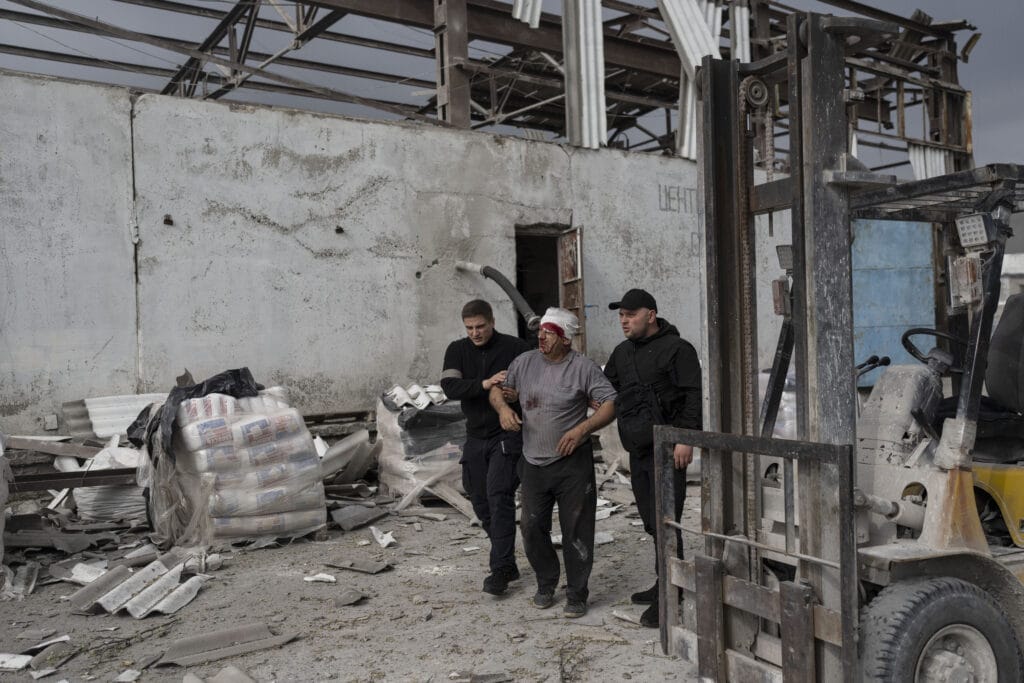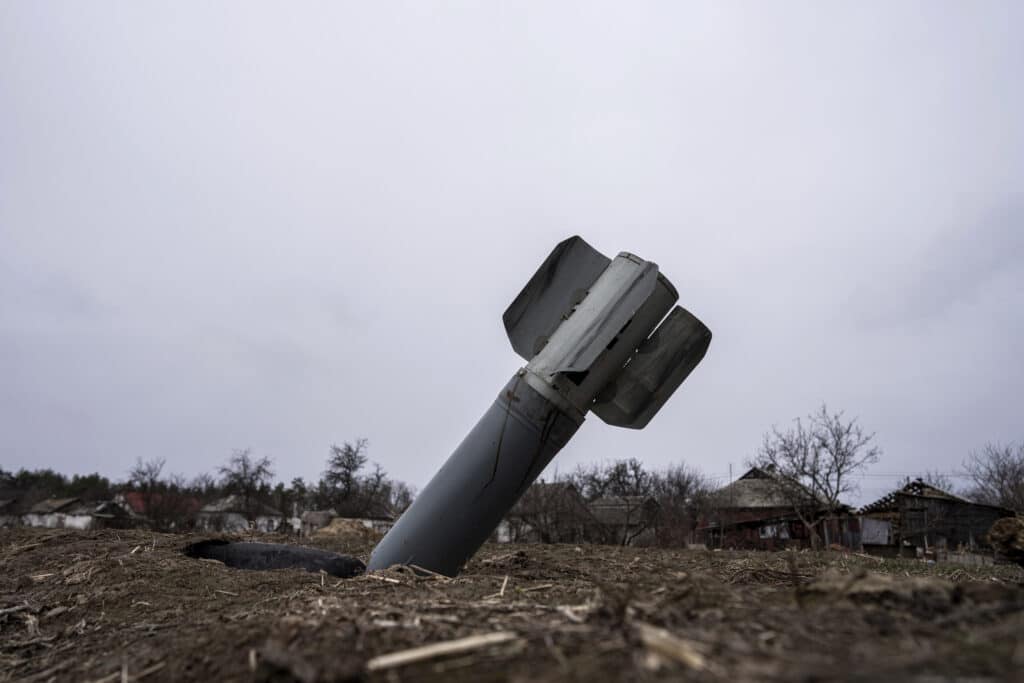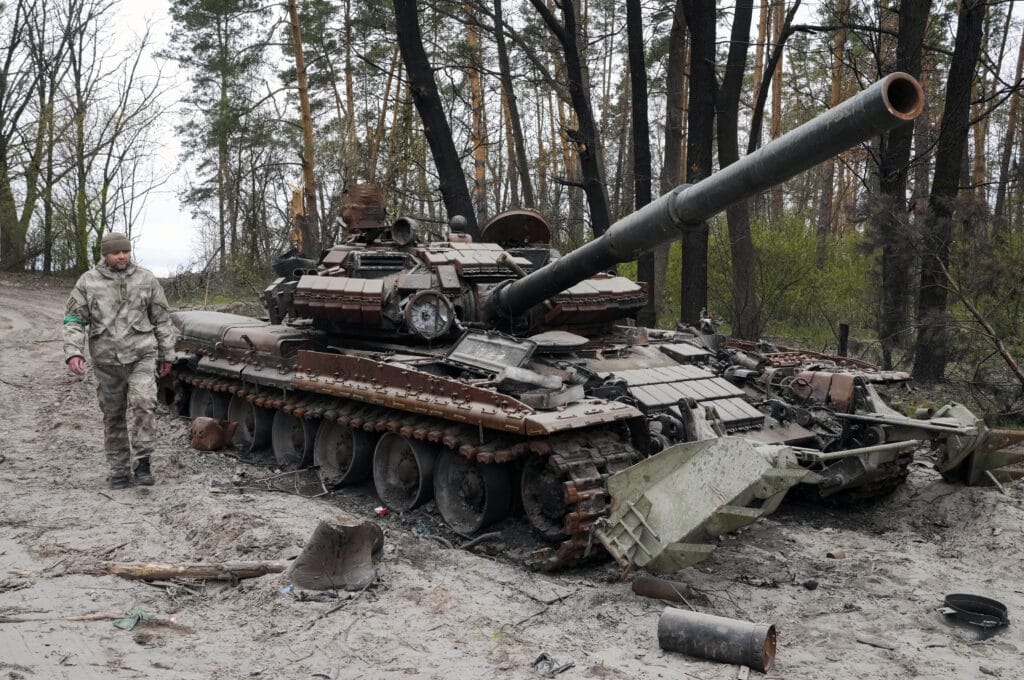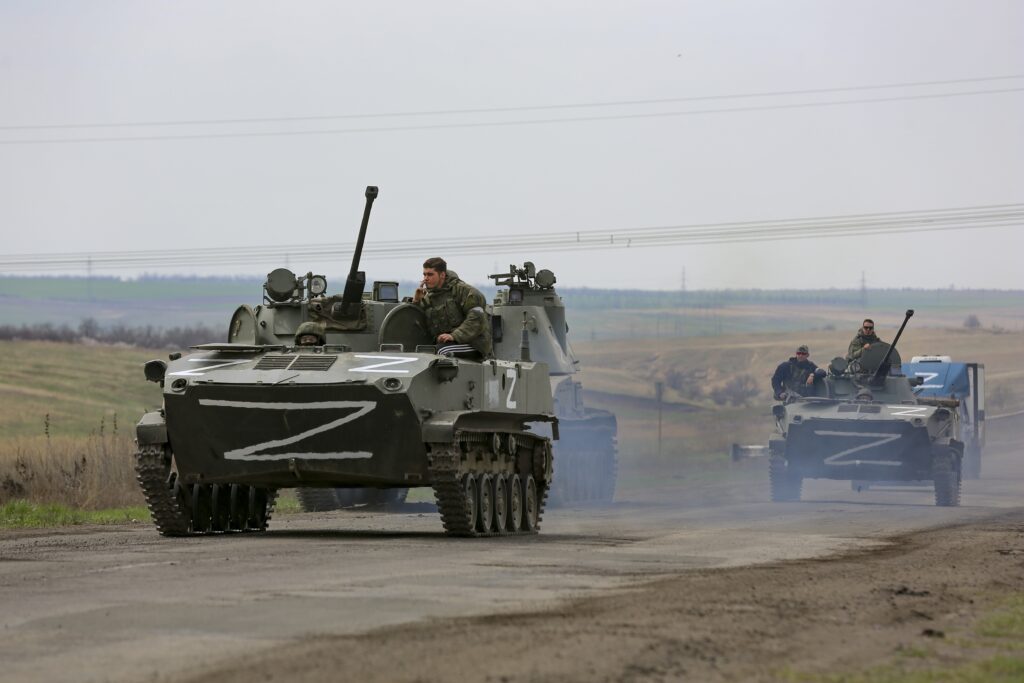Russia has changed its strategy invading Ukraine, dropping the offensive toward Kyiv and instead heading into the Donbas in the east. Russia said that in the last 24 hours, it struck 60 Ukrainian military facilities with its warplanes and 1,260 with its artillery, while attacking 1,214 troop concentrations. The Associated Press has the story:
Experts expect Russia to try to encircle Ukrainian forces with a pincer movement
(AP) Russia’s massive, new offensive in eastern Ukraine reflects Moscow’s hope to reverse its battlefield fortunes after a catastrophic seven weeks of war.
Russian forces have sharply intensified artillery barrages and airstrikes on Ukrainian positions in the industrial heartland known as the Donbas.
A look at the war in Ukraine so far:
A FALTERING START
Russian troops rolled to the outskirts of the capital of Kyiv days after invading Ukraine on Feb. 24, but the offensive was quickly stymied by staunch resistance.
The Russian military incurred heavy personnel and equipment losses, and the failed Kyiv offensive boosted the morale of the Ukrainian forces, allowing its leaders to rally vast international support and secure more weapons from the West. That raised the costs of war for Moscow.
Russian President Vladimir Putin switched the focus to the Donbas, where Moscow-backed separatists have been fighting Ukrainian government forces since 2014, after the Kremlin’s annexation of Ukraine’s Crimean Peninsula.
After the retreat from Kyiv, Chernihiv, Sumy and other areas in northeastern Ukraine, Russian forces pulled back to the territory of Moscow ally Belarus, as well as areas in western Russia to be rearmed and resupplied for the new offensive.
Gen. Alexander Dvornikov was named the new commander for the campaign. At 60, Dvornikov is one of Russia’s most experienced officers, credited with leading Moscow’s forces to success in Syria in a ruthless campaign to shore up President Bashar Assad’s regime in a civil war that saw whole cities flattened and millions displaced. His appointment is seen as reflecting the Kremlin’s awareness to quickly improve poor coordination among various forces that hampered previous efforts

THE NEW OFFENSIVE
Ukrainian officials said the push began Monday in the Donbas, with Russia trying to press the offensive along an arc-shaped front line stretching for more than 300 miles (480 kilometers) from the northeast to the southeast.
In what appeared to be a sharp increase in bombardment Tuesday, Russia said that in the last 24 hours, it struck 60 Ukrainian military facilities with its warplanes and 1,260 with its artillery, while attacking 1,214 troop concentrations. The claims could not be independently verified.
The Pentagon described the stepped-up campaign as “shaping operations” setting the stage for a broader offensive.
Justin Crump, a former British tank commander who leads Sibylline Ltd., a defense consultancy, said the Russians had escalated bombardments and appeared to be moving gradually to take chunks of territory, focusing mostly on the destruction of Ukraine’s most capable forces in the Donbas.
“They are hoping to destroy effectively the largest part of the Ukrainian prewar regular army, the best Ukrainian forces,” Crump told The Associated Press.

THE RUSSIAN BATTLE PLAN
Ukrainian and Western experts expect Russia to try to encircle Ukrainian forces with a pincer movement by advancing from Izyum in the north and Mariupol in the south. Once Russian forces crush the last remaining pocket of Ukrainian resistance at a giant steel mill in Mariupol, they expect that will allow those forces to be freed up to enable the offensive to gain its full tempo.
Some predict Russia also may try to use its forces north of Crimea to try to capture the industrial hubs of Zaporizhzhia and Dnipro on the Dnieper River, effectively cutting Ukraine in half.
During the eight years of fighting the separatists, the Ukrainian government forces have built multiple rows of trenches along the line of contact that the Russians have failed to penetrate. But Crump and other experts noted that Ukraine was running out of weapons and supplies.
“They are firing through a lot of supplies,” he said. “And part of the Russian strategy at this point is to keep probing, to keep searching for ways, keep shaping the battlefield, to get Ukraine to fire the missiles, to use things up, to fire its artillery so they have less supplies left when the bigger blows start to fall sequentially.”
Ukraine has pleaded with the West for warplanes, long-range air defense systems, heavy artillery and armor to counter the massive Russian edge in firepower. The Western allies have increased arms supplies and started providing heavy weapons, but it could take time for these to reach Ukrainian troops, which must then learn how to operate them.
“New equipment is great, really helpful in many ways, but the problem is you’ve got to learn how to use it,” Crump said, adding that Ukraine may put the new weapons in areas away from the fighting to give troops some practice with them and redeploy Soviet-era weapons to the eastern front.

CHALLENGES FOR THE RUSSIANS
The Russian offensive will probably face the same logistical challenges its troops encountered early in the war.
During the botched attempt to storm Kyiv, Russian convoys stretched along highways to the capital, becoming easy targets for Ukrainian artillery, drones and scouts. The operations in the east could be equally hard, especially as foliage sprouts with the arrival of spring and provides natural cover for guerrilla attacks.
Crump said the Russians appear to have learned from their earlier mistakes and tried to avoid long supply lines. They also sought to ensure using railways instead of trucks to carry the bulk of their supplies.
While the terrain in the east is flatter and easier for the Russians, Crump noted that rain has made it difficult for off-road movement, constraining maneuvering.
“That makes it very hard to be unpredictable and to use tanks to their advantage,” Crump said, adding that Ukrainian defenses will be stretched as the ground dries, offering Russian armor more options to maneuver.
While the Russians appeared to be making better use of their assets than at the start of the campaign, he said, “they’ve still got morale problems” and many units “have been pushed together with little training.”
The Washington-based Institute for the Study of War said that while Russian forces may be able to gain ground through the heavy concentration of artillery and larger numbers, its eastern campaign is “unlikely to be dramatically more successful than previous major offensives around Kyiv.” It probably will be hampered by the same “poor coordination, the inability to conduct cross-country operations and low morale that impeded prior offensives,” it said.
A PIVOTAL MOMENT
After the botched beginning, Putin badly needs a victory in the east to boost the Russians’ morale and to try to negotiate an end to hostilities on his terms.
Bruised by Western sanctions, Russia lacks financial resources for a long fight. A protracted conflict will multiply the already heavy economic damage and fuel social tensions, eroding the Kremlin’s base of support.
Russia already has put its most capable combat units in action, and continued fighting will likely force it to mobilize reservists and send fresh conscripts into combat — moves that could bring broad public discontent.
Putin probably hopes that routing Ukrainian forces in the east will allow him to force Kyiv to accept key Kremlin conditions for a halt in fighting — the acknowledgement of Moscow’s sovereignty of Crimea and the recognition of the independence of the eastern separatist regions, including areas that had been under Ukrainian control before the war.
“I think we’re at this pivotal point where we find out whether we’re going to get a peace, a pause or a protracted conflict,” Crump said.
—-
Associated Press writer Danica Kirka in London contributed.







